Recent Water Damage Posts
Tips for Preventing Water Heater Woes in Fort Myers Businesses?
1/21/2025 (Permalink)
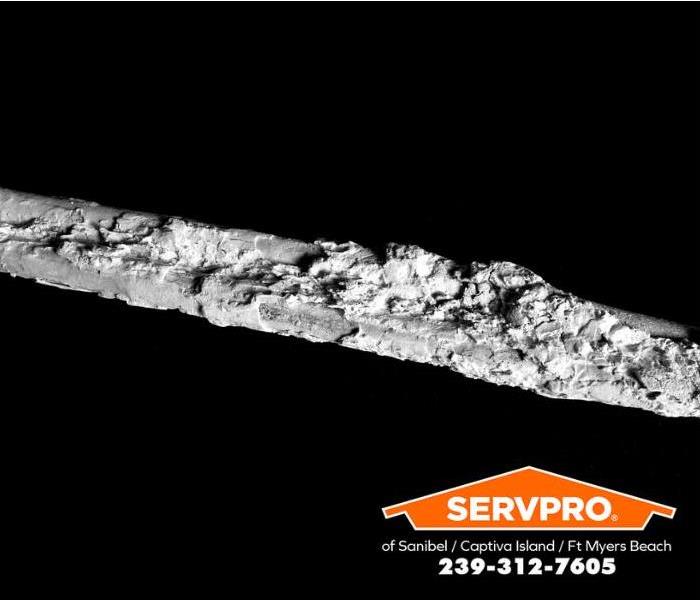 We restore commercial property damage in Lee County 24/7.
We restore commercial property damage in Lee County 24/7.
Our local Sanibel/Captiva Island/Fort Myers Beach teams respond to water damage emergencies 24 hours a day in Fort Myers. A water heating element damaged by calcium and lime buildup can lead to significant water damage in a commercial property.
Over time, minerals like calcium and lime from hard water accumulate on the heating element and inside the water heater. This buildup reduces the heating system's efficiency by insulating the element, causing it to overheat and weaken.
When the heating element deteriorates, it can cause pressure imbalances or create stress within the water heater tank, increasing the likelihood of cracks or ruptures. A sudden failure could release large amounts of water, flooding nearby areas and damaging flooring, walls, and equipment. If the property is unoccupied during the incident, the water damage can escalate quickly, resulting in extensive repairs and downtime for the business.
Additionally, mineral buildup can block or restrict water flow in pipes, causing increased pressure that further stresses the system. Early detection and removal of calcium and lime deposits can save commercial properties from costly repairs and interruptions caused by water heater-related water damage.
Call Us Today!
SERVPRO® Team Zubricki is proud to be SERVPRO’s Franchise of the Year 2024.
When your commercial business or home in Fort Myers needs emergency water damage restoration services, our local Sanibel/Captiva Island/Fort Myers Beach teams are Here to Help. ® Contact us today at 239-312-7605.
SERVPRO® franchises are independently owned and operated.
Fast and Reliable Emergency Water Damage Services for Sanibel Hotels?
12/30/2024 (Permalink)
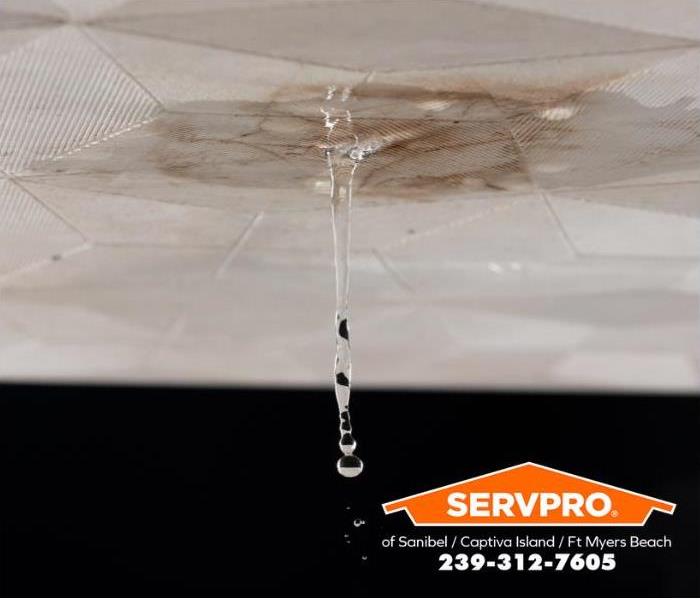 We are trained and certified to restore commercial water damage in Lee County.
We are trained and certified to restore commercial water damage in Lee County.
In a hotel, a broken pipe can disrupt daily operations and inconvenience guests, turning a small leak into a big issue if left unchecked. Due to constant use, pipes in hotel bathrooms, kitchens, and laundry areas are particularly vulnerable to wear and tear.
When a pipe breaks, water can quickly spread into rooms and hallways, soaking carpets, damaging walls, and creating an unpleasant environment for guests. Additionally, if water seeps into lower levels, it can damage electrical systems, worsen structural integrity, and increase the chance of costly repairs.
To address water damage in such a setting, hotel managers should contact our local Sanibel/Captiva Island/Fort Myers Beach teams immediately. We have the training, equipment, and experience to extract water rapidly, thoroughly dry affected areas, and prevent further issues, such as mold outbreaks in damp carpets or walls.
Our professionals understand the importance of discreet and efficient work, ensuring the hotel can resume normal operations as quickly as possible. Additionally, we can advise on preventive measures to reduce the risk of future pipe breaks. Using our team of restoration technicians ensures your hotel remains a safe, comfortable environment for guests and staff alike.
Call Us Today!
SERVPRO Team Zubricki is proud to be SERVPRO’s Franchise of the Year 2024.
If your hotel or home in Sanibel needs water damage restoration services, our local Sanibel/Captiva Island/Fort Myers Beach teams are Here to Help®.
SERVPRO® franchises are independently owned and operated.
The Importance of Knowing Your Main Water Supply Shut-Off Valve in Emergencies in Fort Myers Beach?
11/25/2024 (Permalink)
 We are water damage restoration leaders in Lee County.
We are water damage restoration leaders in Lee County.
Our local Sanibel/Captiva Island/Fort Myers Beach teams restore water damage every month.
When a pipe fails and causes water damage, every second counts. Knowing the location of your main water supply shut-off valve is essential in preventing extensive damage. In most homes, the main valve is located near the water meter or where the main water line enters the home—typically in a crawl space or utility room.
Once located, familiarize yourself with how to operate the valve. Typically, you’ll turn the valve clockwise to shut off the water supply. Labeling the valve clearly for easy identification in emergencies makes it easy for anyone to locate and shut off the correct valve. Practice turning it off periodically to ensure it works smoothly.
During a water emergency, quickly turning off the water supply can stop the water flow, preventing further damage to your home. Please ensure everyone in the household knows the valve's location and how to shut it off. Acting fast can minimize the damage and help you avoid costly repairs.
Knowing where your shut-off valve is and being prepared to use it can protect your home from the worst effects of water damage when disaster strikes. This knowledge empowers you to take control of the situation and act quickly.
Call Us Today!
When your home or commercial business in Fort Myers Beach has a water damage emergency, our Sanibel/Captiva Island/Fort Myers Beach teams are Here to Help®. Contact us today at 239-312-7605.
SERVPRO® franchises are independently owned and operated.
The Destructive Power of Standing Water in Your Fort Meyers Home?
10/22/2024 (Permalink)
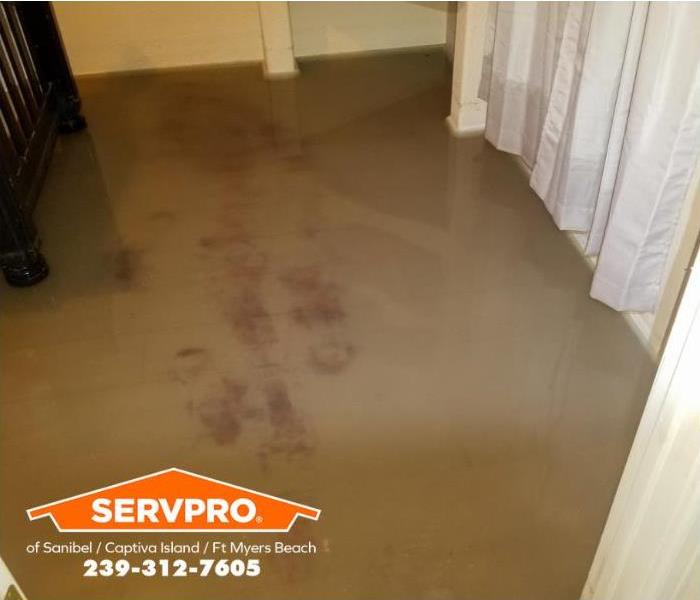 We restore water damage 24/7 in Lee County.
We restore water damage 24/7 in Lee County.
Our local Sanibel/Captiva Island/Fort Myers Beach teams are leaders in water damage restoration services in Fort Meyers. When water damage occurs in a home, swift action is crucial. Standing water, if left unaddressed, can cause significant, costly, and labor-intensive damage. Here's why prompt mitigation is essential:
- Structural Damage: Water can weaken a home's structural integrity over time. Prolonged exposure to standing water can cause wood to warp, rot, or collapse, leading to dangerous and costly repairs.
- Mold and Mildew Growth: Standing water creates an ideal environment for mold and mildew to colonize. These microscopic mold spores can spread rapidly, damaging your property in as little as 48 to 72 hours. Mold remediation can be complex and time-consuming, making prevention key.
- Damage to Personal Belongings: Water can ruin personal belongings, such as furniture, electronics, and important documents. The longer water is allowed to sit, the more extensive the damage becomes, often making items unsalvageable.
To minimize the impact of water damage, removing standing water and beginning the drying process as soon as possible is critical. Quick action can save your home and belongings from severe and lasting damage.
Call Us Today!
When your home or commercial business in Fort Meyers has a water damage emergency, our teams in Sanibel/Captiva Island/Fort Myers Beach are Here to Help. ® Contact us today at 239-312-7605.
SERVPRO® franchises are independently owned and operated.
Cleanup Tips After Suffering a Flood | SERVPRO of Sanibel/Captiva Island/Ft. Myers Beach
5/21/2024 (Permalink)
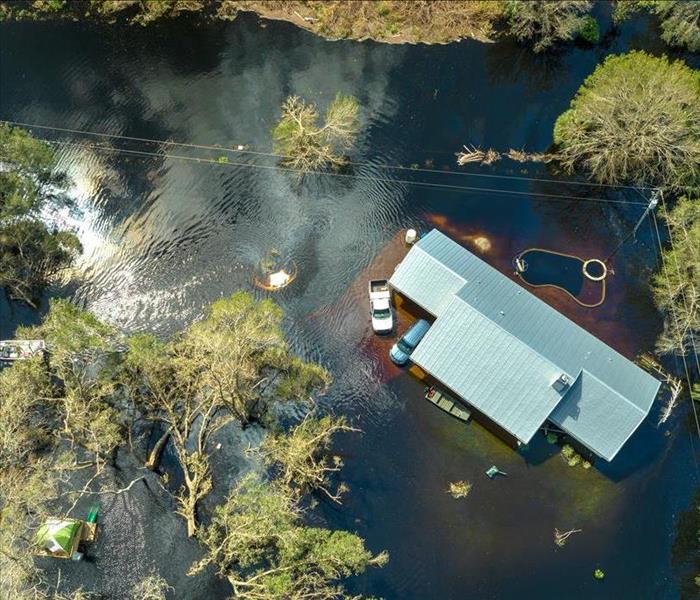 Has a flash flood left damaging aftermath to your home? We are here for the rescue! Call SERVPRO of Sanibel/Captiva Island/Ft. Myers Beach today.
Has a flash flood left damaging aftermath to your home? We are here for the rescue! Call SERVPRO of Sanibel/Captiva Island/Ft. Myers Beach today.
Floods are a common occurrence in our oceanside community, which should be no surprise due to all of the water nearby as well as the threat of hurricanes and coastal storms throughout the year.
Thunderstorms and hurricanes can cause serious damage to our homes and businesses, especially those that are right on the water. Knowing what to do before, during and after a flood can help keep your family safe and this knowledge can actually help minimize potential damage.
Steps to Take Before the Storm
We are grateful that these types of storms that impact our community are often predicted days in advance, so we have plenty of time to prepare our homes and businesses. You should start battening down the hatches as soon as the forecast comes out!
Secure patio furniture, grills or propane tanks to the ground, tidy up your yard and bring anything inside your home or garage that could be swept away by the water, and pull your car into the garage when the storm is about to make landfall. Even just a few inches of fast-moving water can sweep away cars!
Start collecting any important documents or fragile possessions and get them to a safe location in your home. If you are choosing to evacuate, pack up all of the supplies you will need for multiple days away from your home.
After a hurricane or flood, access to our community might be limited for a while due to the cleanup measures. If you are staying put, gather your emergency supplies and be sure you have a few days of food and water just in case.
What to Do Afterward
Fast-moving water can be really dangerous, so don’t walk through the water that has flowed into your home. Stay on higher ground as much as you can. If you evacuated, do not come back into the community until the authorities clear the area and deem your home safe to reenter.
Walk slowly around your home, and dress appropriately while you are moving through the wreckage. Loose boards, broken nails and soggy floors can make your home dangerous to be in. Wear sturdy boots and gloves as you assess the damage. Take pictures of all of the damage you see and then get us on the phone.
How Flood Restoration Works
We are highly trained in different flood restoration techniques, so you can rest easy knowing that we will take care of you as quickly as we can. We will remove the standing water, detect and dry up hidden moisture, and tackle any and all repairs needed in order to give you the full recovery that you deserve.
We truly hope you call us as soon as you are able to, as lingering water in your home can quickly lead to structural issues or even a massive mold infestation. We are available 24/7, and we will get to work right away on your restoration.
You don’t have to recover from a flood alone. Contact SERVPRO of Sanibel/Captiva/Ft. Myers Beach right away.
4 Tips to Protect your Home from Water Damage
2/7/2023 (Permalink)
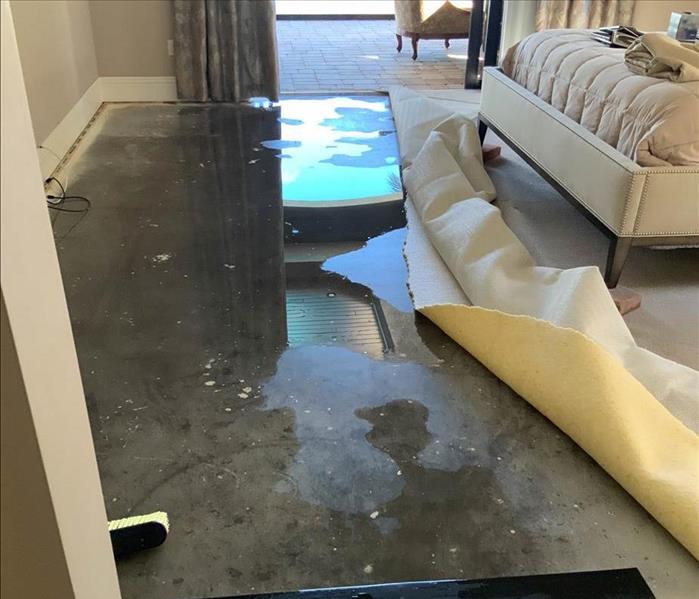 While water damage is often unavoidable—and not always preventable—there are several steps you can take to minimize the risk of it happening.
While water damage is often unavoidable—and not always preventable—there are several steps you can take to minimize the risk of it happening.
Water damage is one of the top reasons for homeowners’ insurance claims in the United States. It can be relatively minor, like a small leak under the sink, or it can be catastrophic, like flooding due to bad weather. While water damage is often unavoidable—and not always preventable—there are several steps you can take to minimize the risk of it happening in your home. Here are some tips on how to protect your home from water damage.
Check your plumbing regularly
Inspect for damage to your plumbing frequently. Leaks can be hard to spot, so pay attention to the sounds of water running or strange drips. If you notice anything suspicious, turn off the main water valve and call a plumber immediately.
Hair is one thing that causes blockages in sinks and drains, but other things such as food particles also contribute to clogged plumbing systems. If you notice that a sink takes longer than normal to drain, or if there's a persistent smell coming from the bathroom when no one has used it recently, look into cleaning out the drain line. A clogged drain might not seem like a huge problem until a water leak occurs inside your home.
Check your roof regularly
The best way to prevent water damage is to check your roof regularly and make sure it's in good working order. Look for loose or missing shingles, damaged flashing, debris buildup that could cause leaks, and damage to the gutters.
Clean your gutters regularly
Cleaning your gutters regularly is also a great way to prevent water damage. The best time to do this is at the end of each season and before the first hard rain. If you don't already have a schedule for cleaning your gutters, consider setting aside one day in the late fall or early spring when you can get up on a ladder and give them a thorough once-over.
Make sure you're using safe practices when cleaning your gutters, such as wearing gloves and using caution while climbing up ladders, especially if they are old or unstable.
Know how to shut off your water main
The first step to dealing with a water main break is knowing where your shut-off valve is located. This valve is typically located in a basement or garage and should be clearly marked with a red cap or an "On/Off" sign. If you're lucky, it may even be labeled "Water Main." Turning the valve clockwise will completely shut off the water supply to any pipes that are connected to it.
Regular maintenance can help prevent water damage to your home.
To protect your home from water damage, there are a few things you can do to reduce the risk of water damage:
- Check the roof regularly. If you notice leaks or sagging in your roof, have it repaired as soon as possible.
- Check your plumbing regularly. Check faucets, toilets, and drains for clogs and other problems that could lead to water damage in your home.
- Clean gutters regularly. Over time, leaves and debris will build up in them and cause them to overflow during heavy rains—this can lead to extensive damage if left unchecked!
Now that you know how to avoid water damage in your home, you can rest easy. We hope this article was helpful in providing some tips on how to prevent water damage at home and what steps you should take if you do experience any problems with your plumbing or other areas of your property. If your home or business suffers from water damage, you can count on our SERVPRO of SERVPRO of Sanibel/Captiva Island/Ft Myers Beach team to be there to help with all the water damage cleanup and restoration!
Top 3 Areas Where Water Damage Most Likely Occurs
12/7/2022 (Permalink)
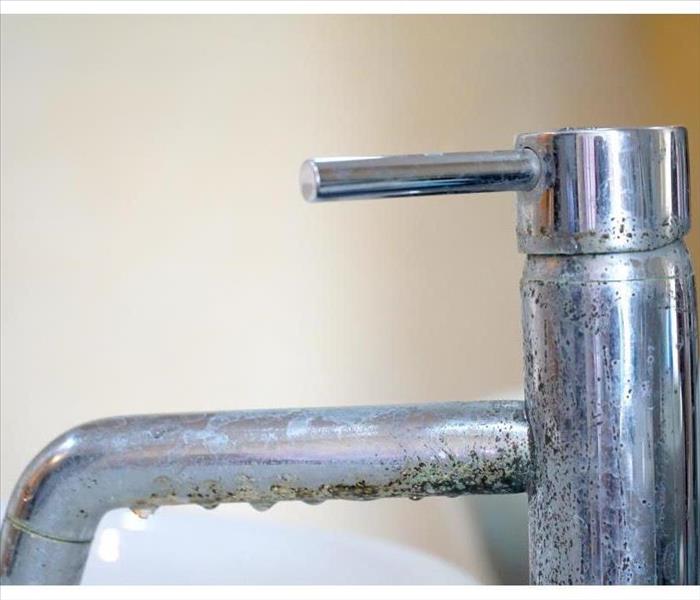 Water can lead to mold growth
Water can lead to mold growth
Common Areas For Water Damage
If your home has just been damaged by water, don't worry! You're not alone. In fact, it's likely that many other homes in your area have also had water damage. In this article, I'll explain why these are the most common areas for water damage and how to hire a reputable repair professional so you can get back to normal as soon as possible.
These 3 places in the house are most likely to have water damage
For most homeowners, water damage is a rare occurrence. But when it happens, it can wreak havoc on your home and make you feel like you need to start from scratch.
Wondering where water damage most often occurs? Here are three places in the house where you might spot signs of moisture problems:
- The bathroom
- The kitchen
- The basement
Basements
Basements are prone to water damage since they're easily accessible and the lowest point in a house. Water damage can occur when a sump pump malfunctions, when a pipe bursts or leaks, or when it freezes. These types of accidents can happen at any time or place, but basements are particularly susceptible because they lack insulation and ventilation, making it easier for condensation on pipes and walls to form.
Kitchen
The kitchen can be at high risk for water damage because it's often a high-humidity, pressure, and moisture area. There are many parts of the kitchen where water can escape or enter—the sink, dishwasher and garbage disposal are all points of entry for excess water. In addition to the obvious sources of water (like leaks), there are other things that cause leaks in your home that might not be so obvious:
- High pressure washing machines: These units create immense amounts of pressure when they're used, which is why it's important to keep them away from walls or cabinets nearby. The same goes for using steam cleaners near cabinets and counters as well! If you think about how powerful these appliances really are compared with regular household use, it makes sense why they might cause more damage than expected if not watched carefully.
Bathroom
Bathrooms are one of the most common places for water damage to occur. They’re susceptible to water damage for many of the same reasons as kitchens: high moisture content can instigate mold growth. Constantly running water can cause excessive humidity in a room that doesn't have proper ventilation.
There are several preventative measures you can take to reduce your risk of experiencing water damage in your bathroom:
- Use a dehumidifier in any area where there is high humidity
- Clean out drains on a regular basis so that mineral buildup does not clog up pipes and cause them to burst
- Check all areas around your sink and tubs to ensure that they aren't damaged or leaking
Call a water damage professional if your home has been damaged
If your home has experienced a significant amount of water damage, call a professional. Water damage can be a serious problem, and it's important to address it quickly. Because of the risk of mold growth and structural damage, you'll want to call someone who knows what they're doing—especially if you live in an older home.
Conclusion
When your Fort Myers, FL home sustains water damage, it’s important to get help right away. The longer you wait, the more damage will occur and become more difficult to repair. Call a professional if you have any doubt about whether your home has been damaged by water.
How Do I Flush a Water Heater?
11/7/2022 (Permalink)
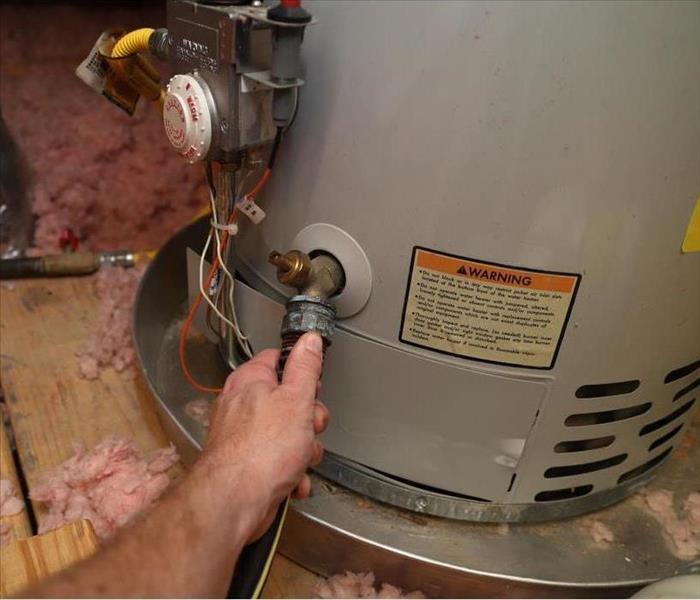 Flushing a water heater is easy and takes just a few hours.
Flushing a water heater is easy and takes just a few hours.
How To Flush a Water Heater?
Water heaters can often develop buildup over time that can lead to significant problems. In fact, you should flush your water heater at least every two years to keep it from getting clogged and prevent leaks. Flushing a water heater is easy and takes just a few hours. Here’s how.
Turn off the water heater
The first step to flushing your water heater is to turn off the power. Turn off both the gas supply and the water supply, as well as any pilots light if there are any.
Connect a garden hose to the drain valve
The second step is to connect a garden hose to the drain valve. The end of the hose will come out of it, and then you can direct it outside.
Then, turn on your water heater's electricity or gas supply and wait for any remaining water inside to be drained out through the hose and into your yard or driveway. Depending on how much water has been stored inside, this may take anywhere from 15 minutes up to several hours.
Run the other end of the garden hose outdoors or into a large bucket.
- Make sure your garden hose is long enough to reach outside.
- The hose must also be wide enough to withstand the pressure of the water; if it's too narrow, it could burst as you run hot water through it.
- Finally, make sure that your garden hose is strong enough for the volume of water you're putting through it.
Open the drain valve and let the water heater flush out.
- Turn off your heater and your faucets, disconnecting anything that may be connected to them. If you have a hose connected to the water heater, make sure that it is disconnected as well.
- Use a wrench to loosen up any fittings on your old tank before removing it from its place in your home's basement or garage (or wherever you decided to put it). You may need an extra set of hands for this step.
When most of the water has drained, shut off the drain valve and disconnect the hose.
- Locate your water heater's drain valve and turn it clockwise to close it. The valve is usually located near or on top of your hot-water tank.
- Disconnect the other end of your flexible hose from its fitting in your home's plumbing system (near where you just turned off the supply valve).
- Check that there is no water left in your tank before turning on another faucet or allowing a sink to fill up—you don't want any residual water from inside your heater to go back into your home's plumbing system!
Turn on the water heater and check for leaks at any valves you opened or removed.
You should turn on the water heater and check for leaks at any valves you opened or removed. If you see a leak, shut off the water heater and fix the problem before turning it back on.
Flushing a water heater is an easy job that can keep your system running well.
Flushing a water heater is an easy job that can keep your system running well. A water heater is not complicated, but it does involve some high-pressure water and hot temperatures. Flushing a water heater is something you can do yourself if you have the right tools and follow the steps carefully.
It’s also important to remember that while flushing takes only a few minutes, letting your hot water sit overnight could take hours or even days depending on how much sediment has built up inside of it over time — so make sure you plan accordingly before trying this method out!
Flushing a water heater is an easy job that can keep your system running well. It's important to keep up with regular maintenance on all kinds of systems, but especially ones that provide hot water for your home. So, if you don't feel like dealing with this task yourself, don’t be afraid to call a professional like SERVPRO of Sanibel Ft. Myers Beach!
4 Steps To Take After Water Damage in Your Home
7/29/2022 (Permalink)
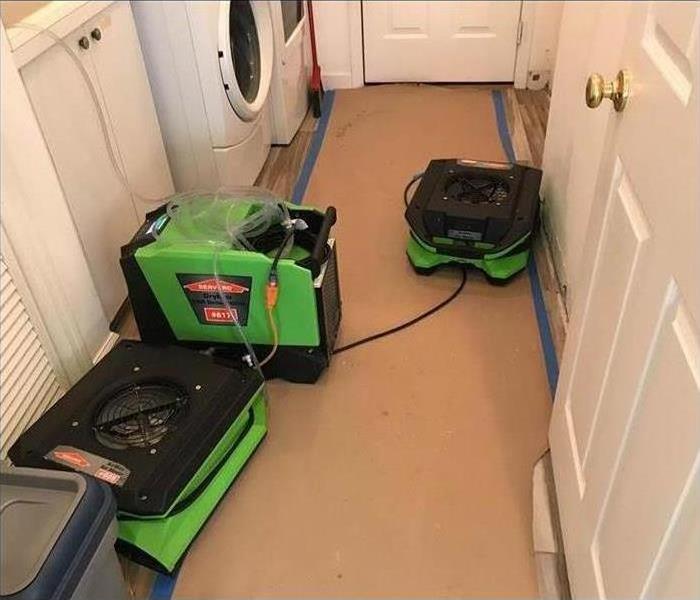 Drying equipment in an Captiva Island, FL home.
Drying equipment in an Captiva Island, FL home.
Four Steps to Follow If Your Home Has Water Damage
It's hard to know what to do first when you've had a flood in your Captiva Island, FL, home. While no one wants to anticipate flooding or water damage ahead of time, it's good to have a plan in case you need it.
1. Protect Yourself and Your Home
One thing you might want to do right away is look over the damage to your home, but you need to do it carefully. When it is safe to return to your home:
- Turn off the electricity.
- Wear boots and rubber gloves.
- Retrieve the most valuable belongings.
- Elevate wood furniture if possible.
2. Stop the Water Source
If the flooding is from a source you can stop, such as broken pipes or a roof leak, mitigate the problem right away to prevent further damage. If your area has experienced heavy rain and more is expected, do what you can to protect your home, such as stacking sandbags or digging trenches.
3. Begin Cleanup
Water clean up should begin as soon as possible to prevent mold growth or secondary damage. A flood restoration company can help you through the process. Professionals can assess the extent of the water damage, identify the water contamination category, perform a safety inspection and move furniture. They can begin the water removal process almost immediately with high-powered vacuums and pumps. Using infrared cameras, technicians can test your home for water in hidden areas behind ceilings and walls.
Once standing water is removed, technicians can use dehumidifiers and professional-grade air movers to drywalls, carpets and furniture.
4. Restore Your Home
Once your home is thoroughly dry, you can begin restoring or replacing damaged items. Some areas may be restored after cleaning and disinfecting, while others may need replacing or remodeling. A restoration company can help with the process by disinfecting, sanitizing and removing any mold growth.
Water damage in your Captiva Island, FL, home can be overwhelming, but you don't have to go it alone. A professional restoration company can help you every step of the way.
3 Things To Do When Turning On Your Irrigation Sprinklers
3/1/2022 (Permalink)
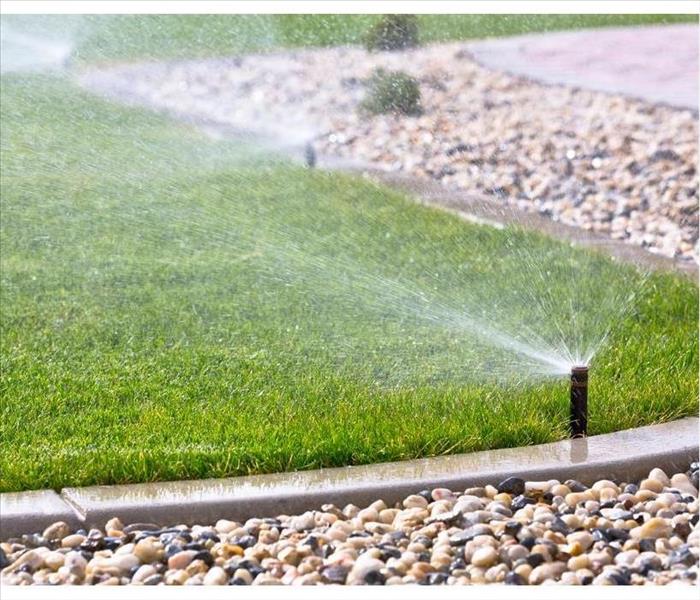 It is important to perform irrigation maintenance.
It is important to perform irrigation maintenance.
Three Steps To Maintain Your Sprinklers
As a business owner, you probably turned your irrigation sprinklers off before winter. Winterizing the system is especially important for areas with a long season where the plants are dormant. When spring returns, it is time to turn this system back on. However, when the temperature starts to rise, you need to perform some irrigation maintenance. Doing this ensures you have a welcoming lawn this summer. There are a few key steps to take to maintain your sprinklers as you turn them back on properly. Here are 3 helpful steps.
1. Turn the Water on Slowly
The most important part of irrigation maintenance is to turn the water on slowly. If you turn it on too quickly, you will blast your sprinklers with a high amount of pressure. This can lead to the heads popping off, fittings breaking, and sprinkler flooding on your lawn. You can ensure that the pressure stays low and you don't have any problems by slowly turning the water on.
2. Locate the Shut-Off Valves
There are a few valves you will need to find before you can turn your sprinklers on. Make sure you know where the stop, waste, and pressure vacuum breaker valves are located.
3. Turn On the Valves
To move the waste and stop valves for your system in Ft. Meyers Beach, FL, you will need a key. Take the key and turn them 90 degrees counterclockwise. They may leak at first, but this should stop momentarily. Additionally, you will find the pressure vacuum breaker next to the valves. When it is parallel to your line, it is on, and if it is perpendicular, it is off. You want to make sure this is on before unleashing the water. Remember to turn all of your valves slowly.
You should follow proper irrigation maintenance protocols when turning your sprinklers back on in the spring. This ensures you don't do any damage and need to hire a water remediation company.
4 Things That Should Always Happen After Sewage Damage
2/28/2022 (Permalink)
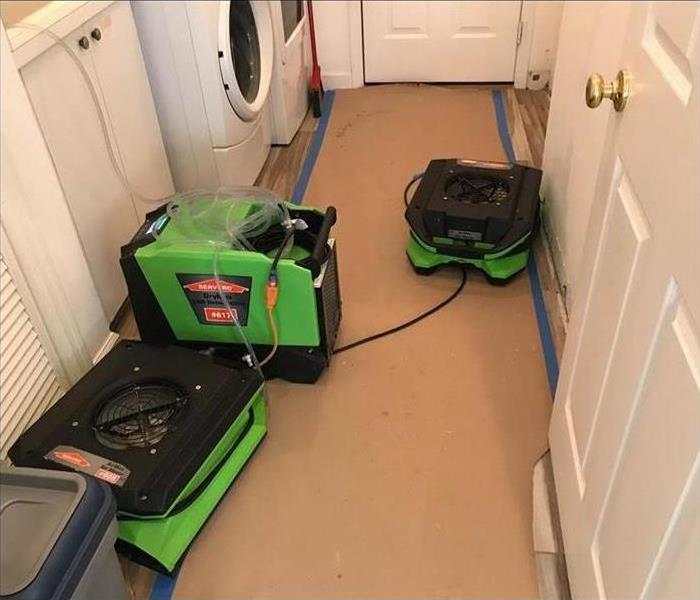 Drying area to avoid mold growth.
Drying area to avoid mold growth.
Four Things To Leave To Professionals After Sewer Damage
If you experience backed-up sewage in your Sanibel, FL, home, you may be tempted to try and clean it up yourself. However, doing sewer cleanup on your own can put you at risk. Sewage is full of dangerous bacteria that can cause serious illness if accidentally inhaled or ingested. It’s best to call professionals anytime sewer backup occurs. Here are four things you should always leave to a professional after sewage damage.
1. Water Extraction
Before anything else happens, sewage water must be cleaned up. Water damage cleanup professionals have specialized equipment that can safely and quickly remove water from a flooded toilet or any other source. They wear special safety equipment to keep themselves protected from harmful bacteria and contaminants in the water and will likely recommend that you stay away from the area during the cleanup process.
2. Property Drying
Once sewer cleanup has occurred, professionals use state-of-the-art equipment to dry your property and reduce the chance of mold development. While it’s certainly possible for you to use fans, open windows and air conditioning systems to dry your home, professional equipment is much more effective and can get the job done faster. It can also monitor and measure the drying process to ensure that your home and belongings are completely dry.
3. Damage Restoration
Professionals know how to restore the damage that sewage backups cause. In some cases, belongings may be damaged beyond repair, but flood restoration companies will do everything in their power to salvage your belongings whenever possible. Restoration services may include minor or major repairs to drywall, carpet and other belongings or structures in the home.
4. Sanitizing
Sanitizing your belongings is an important step in the cleanup process. Professionals use special products to clean and sanitize items to remove bacteria and odors.
Sewer cleanup can be a lengthy and challenging process. The good news is that you don’t have to do it on your own. For best long-term results, it’s a good idea to let professionals deal with your flooded toilet sewer backup.
How To Make a Water Damage Claim
1/24/2022 (Permalink)
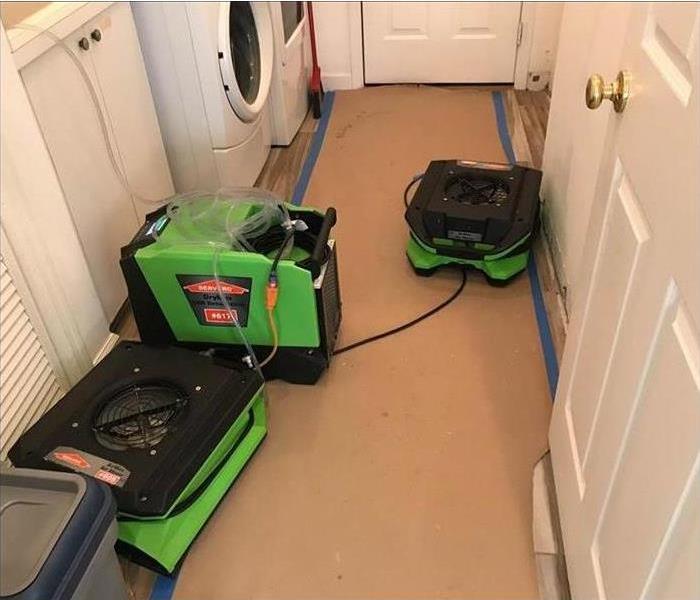 Water cleanup process in Ft. Meyers Beach, FL.
Water cleanup process in Ft. Meyers Beach, FL.
How To Make a Water Damage Claim
Bursting pipes and other mishaps that flood your home can add a lot of tasks to your to-do list. You must find the source of the water so you can minimize overall damage. You need to arrange for repairs from a certified water restoration company. You will also probably want to file an insurance claim. Filing a claim can be daunting if you don’t understand whether your policy covers the accident or what you are entitled to receive. The following information may help demystify the process.
Factors Affecting Claim Acceptance
Standard homeowners’ policies cover a myriad of sudden accidents that may lead to water damage. Whether your policy covers the damage to your home in Ft. Meyers Beach, FL, depends on several factors:
- Type and scope of policy
- Source of flooding
- Timing of damage onset
Some policies cover more than just bursting pipes. Coverage can vary by state or region and the amount of extended coverage you purchase. If floodwaters come from outside your home, particularly if you are in a flood plain, you may need an extra flood policy to cover the loss. If the damage was brought on by an ongoing problem rather than a sudden issue, your claim is more likely to be denied.
Tips for Minimizing Denials
The best way to avoid a claim denial is to understand your coverage and make sure it is adequate to protect you against the specific risks to your home. Your agent can explain your policy and suggest extended coverage when necessary. It is also important to keep up with a regular maintenance schedule for your home. Most gradual damage claims are denied because they indicate a lack of vigilance on the part of the homeowner. If you fix a broken pipe in a timely manner, for example, it is less likely to cause significant damage.
Hiring a restoration company that is Faster to Any Size Disaster can improve the chances of claim acceptance. Knowing your rights, as well as your responsibilities makes filing after a bursting pipes incident easier.






 24/7 Emergency Service
24/7 Emergency Service











